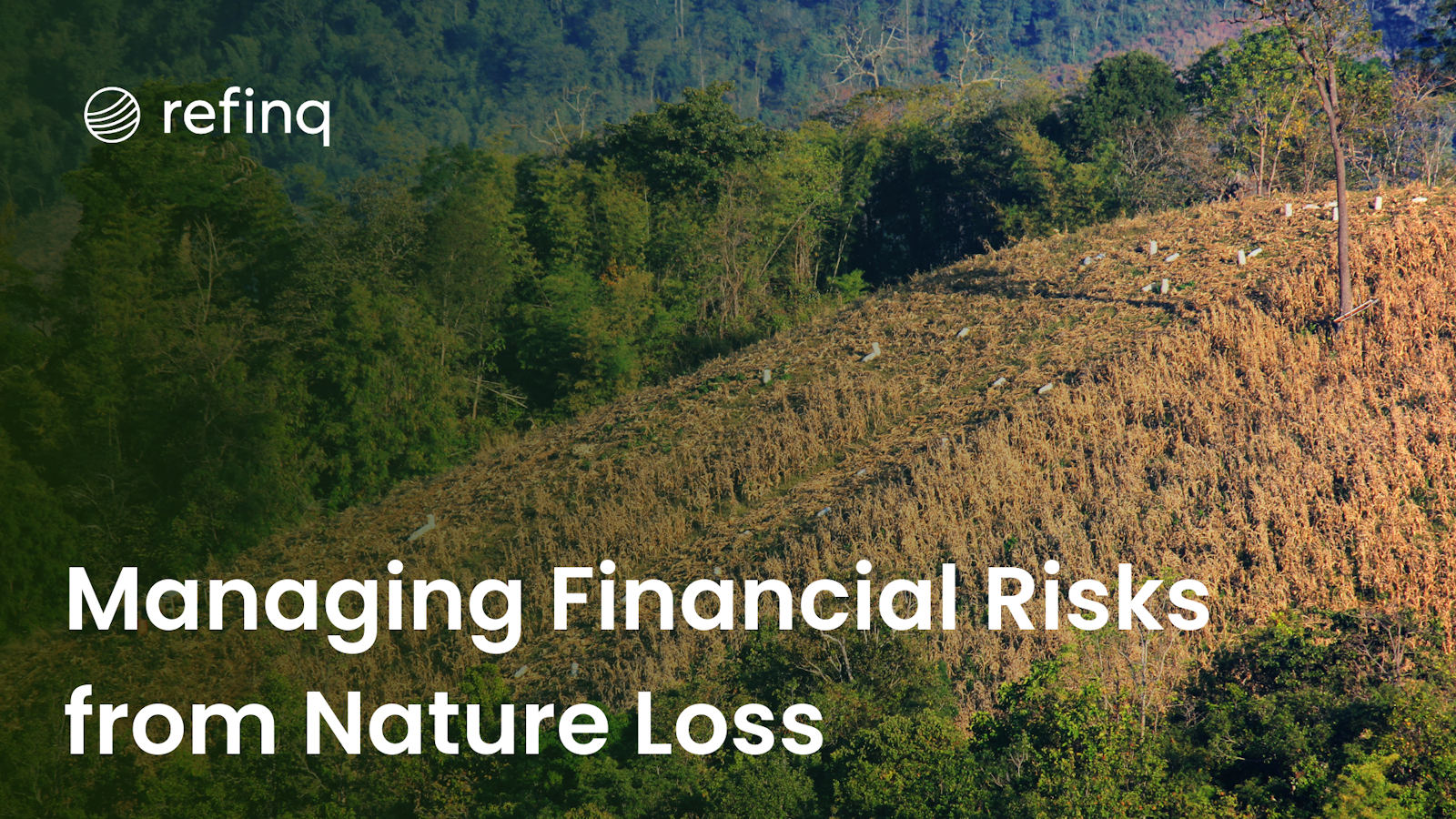

The financial sector is increasingly recognizing the significant risks posed by nature loss and biodiversity decline. Companies and investors are seeking ways to assess and mitigate these risks to protect their assets and ensure long-term profitability. Recently, Bloomberg launched a solution to help investors assess their exposure to nature and biodiversity-related risks, highlighting the growing importance of this issue in financial markets.
Understanding and managing nature-related financial risks is crucial for businesses aiming to navigate the complex interplay between environmental degradation and economic stability. Platforms like refinq are at the forefront of providing advanced tools for climate and biodiversity risk assessments, enabling enterprises to make informed decisions. (Discover how refinq empowers businesses)
Nature-related financial risks refer to potential economic losses resulting from the degradation of natural ecosystems and biodiversity. These risks can manifest as:
Physical Risks: Damage to assets due to natural disasters exacerbated by environmental degradation.
Transition Risks: Financial losses arising from the shift towards a sustainable economy, including policy changes and market shifts.
Liability Risks: Legal consequences faced by companies causing environmental harm.
(Learn more about nature-related financial risks)
Economic Stability: Biodiversity loss can disrupt supply chains and increase operational costs.
Investor Confidence: Investors are increasingly considering environmental factors in their decision-making processes.
Regulatory Compliance: Governments are implementing stricter regulations to protect the environment.
Resource Scarcity: Depletion of natural resources can lead to increased prices and scarcity of raw materials.
Market Volatility: Environmental disasters can cause market fluctuations and impact financial performance.
Insurance Risks: Increased frequency of natural disasters leads to higher insurance claims and premiums.
(Explore the financial risks of nature loss)
Raw Material Shortages: Overexploitation of natural resources can lead to shortages, affecting production processes.
Agricultural Impacts: Loss of pollinators and soil degradation impact food production, leading to supply chain disruptions.
Transportation Challenges: Natural disasters can damage infrastructure, hindering the movement of goods.
(Learn about nature loss and supply chains)
Price Fluctuations: Scarcity of resources can lead to volatile commodity prices.
Investor Uncertainty: Environmental risks can deter investment and affect stock market performance.
Regulatory Changes: New environmental regulations can impact market dynamics and profitability.
(Understand the influence of nature loss on markets)
Environmental Risk Analysis: Evaluating the potential environmental impacts on assets and operations.
Scenario Planning: Developing strategies for various environmental outcomes.
Stakeholder Engagement: Collaborating with stakeholders to address environmental concerns.
Data Integration: Utilizing comprehensive data to inform decision-making.
Monitoring and Reporting: Keeping track of environmental performance and reporting transparently.
Compliance Management: Staying updated with environmental regulations and standards.
Board-Level Oversight: Ensure that biodiversity considerations are part of corporate governance.
Risk Management Policies: Incorporate biodiversity risks into enterprise risk management frameworks.
(Explore strategies for mitigating biodiversity risks)
Sustainable Sourcing: Procure raw materials from sources that prioritize biodiversity conservation.
Investment in Restoration: Support projects aimed at restoring degraded ecosystems.
Reporting Frameworks: Utilize frameworks like the Taskforce on Nature-related Financial Disclosures (TNFD) to report on biodiversity impacts.
Stakeholder Communication: Engage with investors, customers, and communities about biodiversity initiatives.
(Learn about nature-related financial disclosures)
Technological advancements have made it possible to analyze vast amounts of environmental data efficiently. Tools like:
Geospatial Analysis: Mapping and analyzing environmental risks spatially.
Machine Learning: Predicting future risks based on historical data.
(Learn about conceptual frameworks for nature risks)
Informed Decisions: Technology provides investors with the insights needed to make sustainable investments.
Risk Mitigation: Early detection of risks allows for proactive measures.
refinq is a pioneering SaaS platform designed to help enterprises effectively manage environmental risks through advanced climate and biodiversity risk assessments. With the tagline “Your physical assets are exposed to mother nature. It’s time to act.” (Visit refinq), refinq offers:
Real-Time Risk Evaluations: Processing data for any global location with a granularity of up to 25 meters.
Extensive Data Integration: Utilizing over 2.5 billion data points from earth observations and climate models.
Actionable Insights: Translates complex environmental data into practical strategies.
Regulatory Compliance: Aligns assessments with international frameworks like TNFD, CSRD, ESRS, and SBTN.
Future Forecasting: Capable of predicting environmental impacts up to the year 2100, helping businesses plan proactively.
User-Friendly Tools: Offers tailored solutions such as due diligence and portfolio impact analysis, aiding in risk management.
By integrating refinq into their risk management strategies, businesses can navigate nature-related financial risks more effectively and ensure sustainable growth. (Explore refinq's solutions)
Managing financial risks from nature loss is no longer optional but a necessity for businesses and investors. By understanding the implications of environmental degradation on financial systems, organizations can implement effective risk management strategies. Leveraging advanced technologies and platforms like refinq enables proactive assessment and mitigation of nature-related financial risks, securing long-term economic stability.
Download our free whitepaper here: "Reimagining Nature as Capital: Insights from the Nature Tech Summit 2025"
How Businesses Address Nature-Related Financial Risks (World Economic Forum)
Nature-Related Financial Risks: Cambridge Institute for Sustainability Leadership